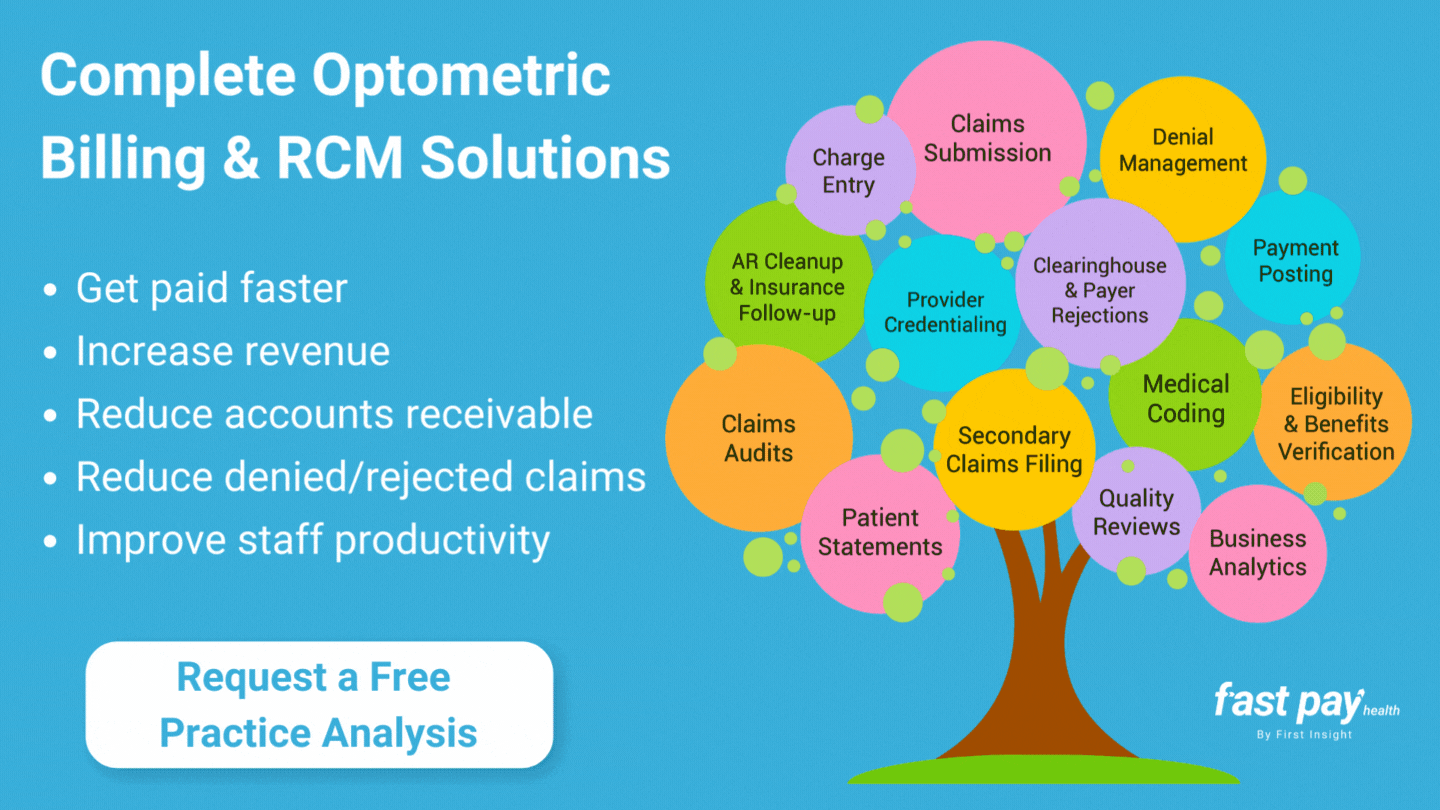Eye Care Related 2023 CPT® Code Changes
/Every calendar year, the American Medical Association® (AMA) announces changes to the Current Procedural Terminology (CPT®) code set. The 2023 CPT® code set changes (effective January 1, 2023) aim to reduce administrative tasks and simplify coding and documentation for evaluation and management (E/M) services.
Below we’ll review the types of CPT® codes and the new, deleted, and revised codes for 2023 that pertain to optometry and ophthalmology procedures to better prepare for billing medical insurance payers.
What is a CPT® Code?
CPT® codes were developed in 1966 by The American Medical Association to describe a medical, surgical, or diagnostic procedure that doctors and healthcare providers perform. CPT® codes ensure uniformity and are required for billing medical insurance payers.
CPT® codes are published by the AMA and consist of various categories/types of five-digit codes and two-character modifiers to describe any changes to the procedure. Many of the codes are numeric, but a few are alphanumeric. Some codes may have a fifth alpha character, such as A, F, T, or U.
What is a Medical Billing Modifier?
Modifiers are added to the Healthcare Common Procedure Coding System (HCPCS) or CPT® codes to provide additional information necessary for processing a claim. For instance, modifiers identify why a doctor or other qualified healthcare professional provided a specific service and procedure. Modifiers are placed at the end of the CPT® code with a hyphen.
To make it more complicated, insurance or third-party payer rules for how to use modifiers vary with specific HCPCS and CPT® billing codes. Not all modifiers can be used with HCPCS or CPT® codes.
It’s also critical that you keep up with Local Coverage Determinations (LCD), National Coverage Determinations (NCD), and Medicare Administrative Contractors (MAC) to ensure you are coding claims correctly. Sign up to receive payer listserv updates.
Related Blog: How (and How Not) to Use Common Medical Billing Modifiers
What are the Types of CPT® Codes?
Category I Codes: Describes services, procedures, devices, and drugs (including vaccines) that are usually placed into sub-categories. This category includes evaluation and management (E/M) codes.
Category II Codes: Alphanumeric supplemental codes track follow-up care and outcomes for performance measurement, such as does the patient smoke. These codes are not linked to reimbursement.
Category III Codes: These are temporary alphanumeric codes when a physician uses a new or emerging technology, procedure, and service. Category III codes were “created for data collection, assessment, and payment of new services and procedures that currently don’t meet the criteria for a Category I code,” reports the AMA.
Proprietary Laboratory Analyses (PLA) Codes: PLA codes are an alphanumeric CPT® code set that the AMA CPT® Editorial Panel recently added to describe proprietary clinical laboratory analyses. PLA codes include a corresponding descriptor to identify tests for specific labs or manufacturers.
Are There Any CPT® Code Set Changes for 2023?
Across all sections (except anesthesia), the AMA released 225 new codes, 93 revised codes, and 75 deleted codes for the 2023 CPT® code set changes. For example, a few changes include the following:
Total time to meet when using time for code selection.
New descriptions detail a comprehensive history and examination with a “medically appropriate” history and/or examination.
Revised office consultation codes include “other outpatient” consultation services.
Home visit codes were revised to include “residence” as a place of service.
What Eye Care CPT® Codes Were Added for 2023?
92066: Orthoptic training (vision therapy) under the supervision of a physician or other qualified health care professional. Always verify the benefit plan descriptions, as some insurance plans exclude benefits for vision therapy.
What Eye Care CPT® Codes Were Deleted (Retired) for 2023?
99241: Office consultation for a new or established patient requires these three key components: A problem-focused history, a problem-focused examination, and straightforward medical decision-making. Pro Tip: Use 99242 for a consultation, starting January 1, 2023.
What Eye Care Category III CPT® Codes Were Deleted for 2023?
0470T: Optical coherence tomography (OCT) imaging of the skin.
0514T: Intraoperative visual axis identification using patient fixation.
What Eye Care CPT® Code Descriptors Were Revised for 2023?
92065 New Descriptor: Orthoptic training; performed by a physician or other qualified health care professional.
99242 New Descriptor: Office or other outpatient consultation for a new or established patient, which requires a medically appropriate history and/or examination and straightforward medical decision-making. When using total time on the date of the encounter for code selection, 20 minutes must be met or exceeded.
99243 New Descriptor: Office or other outpatient consultation for a new or established patient, which requires a medically appropriate history and/or examination and a low level of medical decision-making. When using total time on the date of the encounter for code selection, 30 minutes must be met or exceeded.
99244 New Descriptor: Office or other outpatient consultation for a new or established patient, which requires a medically appropriate history and/or examination and a moderate level of medical decision-making. When using total time on the date of the encounter for code selection, 40 minutes must be met or exceeded.
99245 New Descriptor: Office or other outpatient consultation for a new or established patient, which requires a medically appropriate history and/or examination and a high level of medical decision-making. When using total time on the date of the encounter for code selection, 55 minutes must be met or exceeded.
Get Paid Faster with Fewer Coding Denials
Keeping up with confusing and never-ending optometry and ophthalmology medical billing rules, CPT® and ICD-10 code changes, insurance payer and managed vision plan requirements, complicated EDI processes, and managing denied and rejected claims is time-consuming and frustrating.
Fast Pay Health optometric billing consultants will help you get started, and we work with ANY eye care practice management software. Request a free practice analysis today—we’re just a form submission away.
CPT® is a registered trademark of the American Medical Association®. This blog is for informational purposes only.



